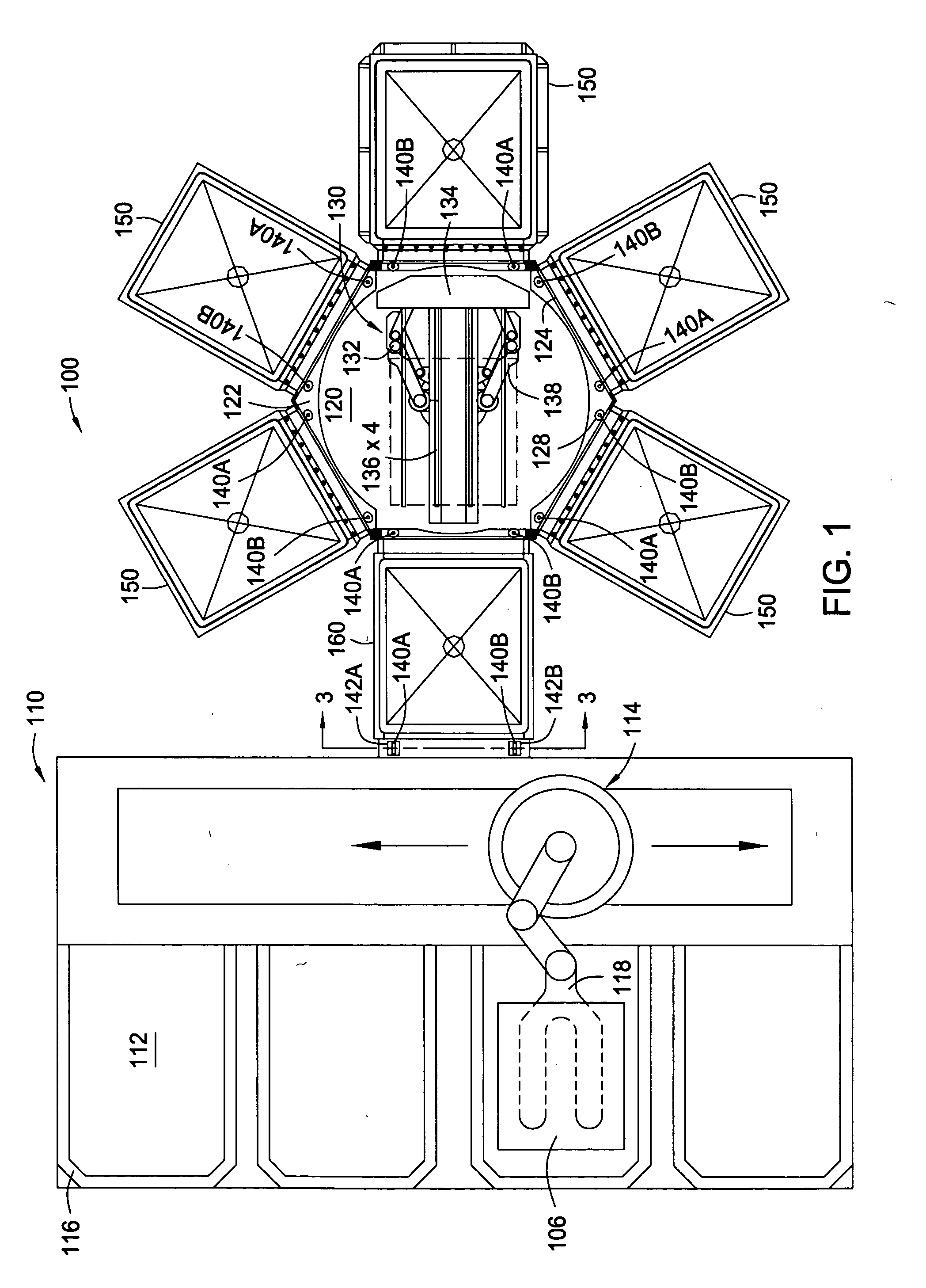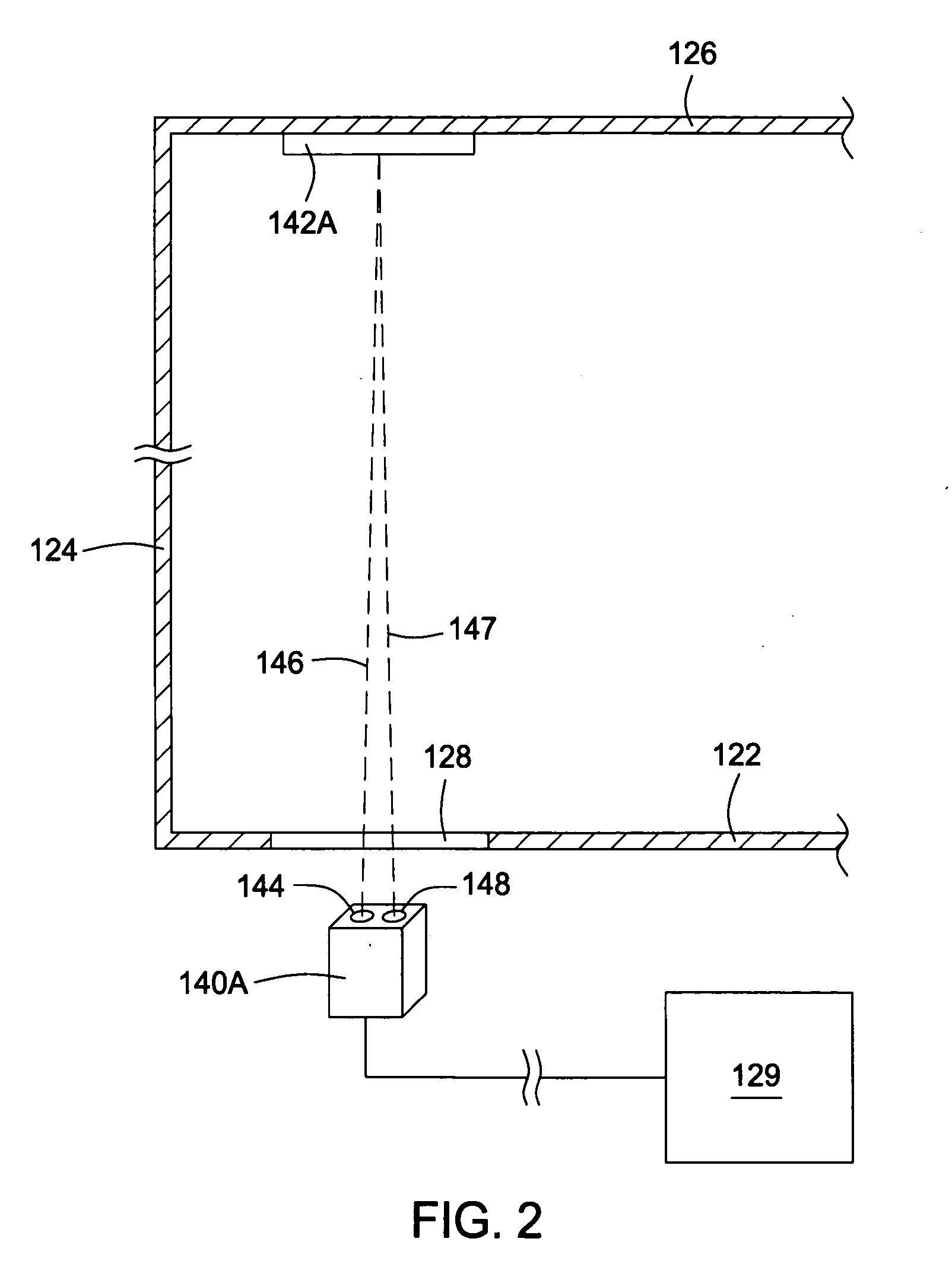Sensors for dynamically detecting substrate breakage and misalignment of a moving substrate
a sensor and substrate technology, applied in the field of apparatus and methods for detecting substrate breakage and misalignment of moving substrates, can solve the problems of collision not only chipping or cracking the flat-panel display substrate, but also increasing the positional accuracy of substrates throughout the processing system,
- Summary
- Abstract
- Description
- Claims
- Application Information
AI Technical Summary
Problems solved by technology
Method used
Image
Examples
examples
[0040] In one example, two Omron® Model No. E3C-LR11 laser sensors having a beam diameter of less than about 0.8 mm at working distances up to about 1000 mm (i.e., working distances of less than about 40 inches) is used to sense a substrate along its two parallel edges as the substrate, supported on an end effector of a dual-arm robot, passes the sensors. At a substrate transfer speed of about 1000 mm / s, defects having a size of about 3 mm or greater were detectable. The center of the impinging beam from each sensor was positioned at a distance of about 3 mm inward from the edges of the substrate. At a substrate transfer speed of about 100 mm / s, defects having a size of about 1 mm or greater were detectable, and at a substrate transfer speed of about 2000 mm / s, defects having a size of about 10 mm or greater were detectable. Thus, the two impinging beams for sensing a substrate being transferred at a speed in a range of about 100 mm / s to about 2000 mm / s are preferably positioned at ...
PUM
| Property | Measurement | Unit |
|---|---|---|
| diameter | aaaaa | aaaaa |
| diameter | aaaaa | aaaaa |
| velocity | aaaaa | aaaaa |
Abstract
Description
Claims
Application Information
 Login to View More
Login to View More - R&D
- Intellectual Property
- Life Sciences
- Materials
- Tech Scout
- Unparalleled Data Quality
- Higher Quality Content
- 60% Fewer Hallucinations
Browse by: Latest US Patents, China's latest patents, Technical Efficacy Thesaurus, Application Domain, Technology Topic, Popular Technical Reports.
© 2025 PatSnap. All rights reserved.Legal|Privacy policy|Modern Slavery Act Transparency Statement|Sitemap|About US| Contact US: help@patsnap.com



